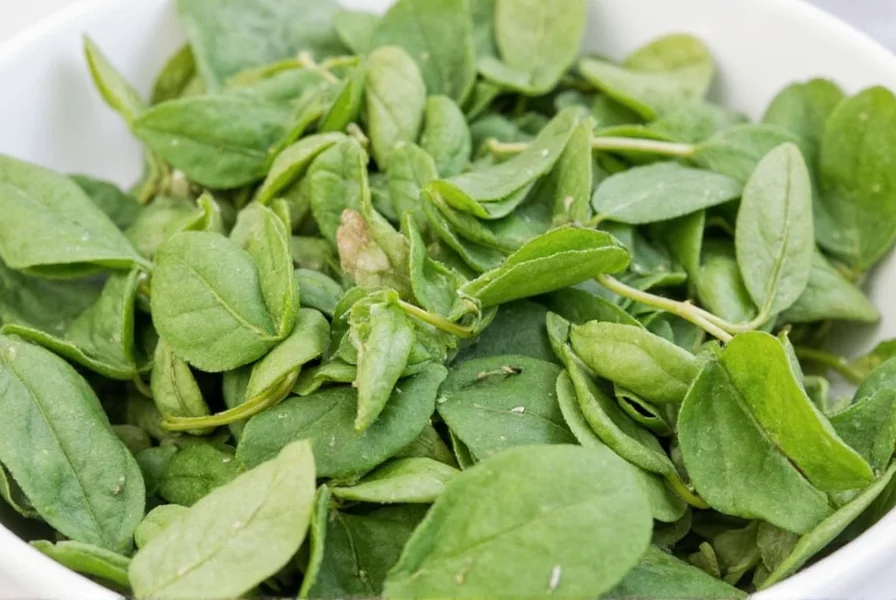Table of Contents
What Are Ground Bay Leaves?
Ground bay leaves are dried Laurus nobilis leaves pulverized into a fine powder, releasing concentrated aromatic compounds for immediate flavor infusion. Unlike whole leaves requiring removal after cooking, ground versions integrate seamlessly into dishes while preserving the herb's signature earthy, slightly bitter notes. This form maximizes flavor distribution and eliminates choking hazards, making it ideal for sauces, rubs, and baked goods where whole leaves would be impractical.
How to Use Ground Bay Leaves
Ground bay leaves require precise measurement due to their potency. Start with 1/8 teaspoon per serving and adjust based on dish intensity. Add early in cooking for slow flavor development, but avoid prolonged high heat which degrades volatile oils. For maximum impact:
- Sauces & soups: Mix into base liquids before simmering (1/4 tsp per quart)
- Marinades: Combine with oils and acids for meat/poultry (1/2 tsp per cup)
- Baked goods: Use in small quantities (1/16 tsp per cup of flour) for subtle warmth in breads and cakes
Ground vs Whole Bay Leaves: Key Differences
| Characteristic | Ground Bay Leaves | Whole Bay Leaves |
|---|---|---|
| Flavor Release | Immediate, even distribution | Slow, requires 30+ minutes simmering |
| Usage Convenience | Edible, no removal needed | Must be removed before serving |
| Best Applications | Sauces, dressings, baked goods | Long-simmered stews, braises |
| Substitution Ratio | 1/4 tsp ground = 1 whole leaf | 1 whole leaf = 1/4 tsp ground |
Practical Cooking Applications
1. Enhanced Meat Rubs
Combine 1 tsp ground bay leaves with 2 tsp smoked paprika, 1 tsp garlic powder, and 1/2 tsp black pepper. Apply to chicken or pork before grilling for complex savory notes.
2. Instant Flavor Boosters
Add 1/8 tsp to: - Tomato-based pasta sauces during simmering - Rice or quinoa during cooking - Coffee rubs for brisket - Salad dressings for unexpected depth
3. Baked Good Enhancer
For cinnamon rolls or banana bread: Mix 1/16 tsp ground bay leaves with dry ingredients. The subtle herbal note complements sweetness without overpowering.
What to Look for When Buying
Quality indicators for ground bay leaves:
- Color: Uniform dark green-brown (avoid grayish or faded hues)
- Texture: Fine powder with no visible leaf fragments
- Aroma: Strong herbal scent when opened (no musty odors)
- Storage: Look for opaque, airtight packaging to preserve freshness
Store in cool, dark place away from heat sources. Properly sealed containers maintain potency for 18-24 months.
Frequently Asked Questions
Can I use ground bay leaves in place of whole leaves in all recipes?
Yes, but adjust quantities carefully. Use 1/4 teaspoon ground for each whole leaf called for. Avoid using ground in recipes where whole leaves provide visual presentation (e.g., garnishing). For slow-cooked dishes like stews, whole leaves may provide more nuanced flavor development.
Why is ground bay leaves more potent than whole?
Grinding increases surface area, releasing 3-5x more essential oils than whole leaves. This makes it more concentrated but also more prone to flavor degradation if stored improperly. Always start with smaller amounts and taste before adding more.
Do ground bay leaves have health benefits?
While bay leaves contain antioxidants and anti-inflammatory compounds, culinary use provides minimal nutritional impact. Do not consume for medicinal purposes without consulting a healthcare professional. This article focuses solely on culinary applications.
How to test if ground bay leaves are still fresh?
Rub a small amount between fingers. Fresh leaves emit a strong, clean herbal aroma. If scent is faint or musty, or if the powder clumps due to moisture exposure, replace it. For best results, purchase small quantities every 6-12 months.











 浙公网安备
33010002000092号
浙公网安备
33010002000092号 浙B2-20120091-4
浙B2-20120091-4